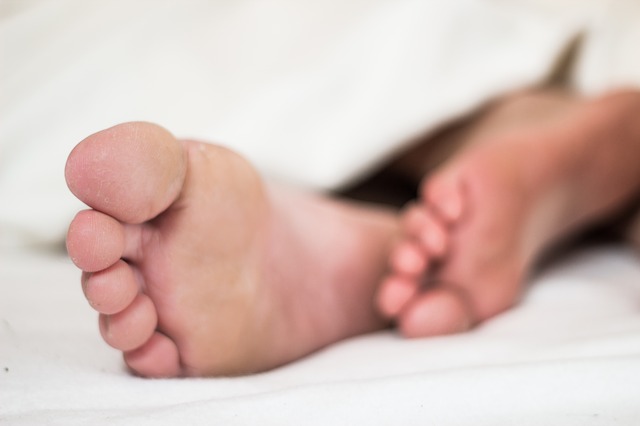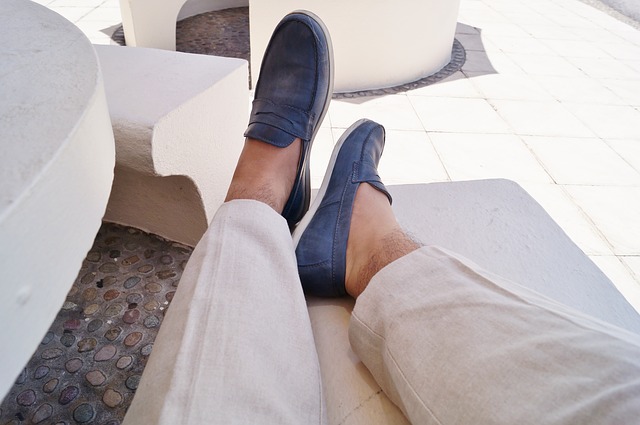Restless Legs Syndrome (RLS) is a nervous system disorder which makes the person to want to keep moving their legs. The disorder does not let the person suffering sleep, so it is also included in sleep disorders. Legs throb, creep and gives many other feelings to the person with the disorder. The syndrome makes the person unable to resist moving their legs mostly during night or while relaxing which can only be relieved by moving the legs so it is taken as a movement disorder too.

The feelings are known as paresthesias and dysesthesias. Paresthesias are abnormal sensations and dysesthesias are abnormal sensations which are also unpleasant or painful. People with RLS have difficulty to fall asleep and keep waking up throughout the night. The disorder causes tiredness, low concentration, impaired memory and fatigue in people along with affecting their professional and personal lives due to sleep deprivation. They are even unable to complete their daily activities. It can also cause depression. Many people with RLS also have periodic limb movement of sleep (PLMS) which is a disorder that makes legs twitch, shake and jerk involuntarily during sleep. People with PLMS do not always have RLS.
RLS is a lifelong chronic condition. No cure has been found out yet.
Who are at risk of Restless Legs Syndrome?

Many people suffer from Restless Legs Syndrome. About 1 out of 10 people are said to have RLS. About 10% of U.S. population is subjected to be suffering from RLS in which 2 to 3% have moderate to severe RLS. Even children can have RLS. Both male and female population have RLS but it is found more in women. The symptoms become more prominent in middle aged and old population. People with Parkinson’s disease also are more likely to have RLS.
Causes of Restless Legs Syndrome
The cause of RLS is not known till now. Many studies are being conducted to find out more about it. The disorder is mostly related to genetic and hereditary factors. The syndrome is found in many members of the same family if the syndrome starts before the age of 40. Gene variants are also considered to cause RLS. Some studies also tell that low iron levels in the brain can also cause RLS.
Another factor that has been found to cause RLS is the dysfunction of the basal ganglia circuits of brain or dopamine. The part of brain is responsible for muscle activities and movements. If the paths of that part of brain are obstructed, involuntary muscle movements happen.
The unproved causes includes diseases like kidney failure, diabetes, peripheral neuropathy, etc. It also includes medications like antidepressants, antihistamines, anti-nausea drugs, antipsychotic drugs, etc. Pregnant women also have RLS during late pregnancy which goes after some time of delivery.
Conditions like high alcohol content in blood and lack of sleep might also be responsible for RLS episodes temporarily. The causes of RLS are also said to be obesity, smoking, anemia, polyneuropathy, deficiency of minerals and vitamins, caffeine, poor venous circulation in legs, etc.
Symptoms of Restless Legs Syndrome

The symptoms of RLS is not the same in everybody. People’s experience with RLS is different from one person to another and when asked about the symptoms, they describe it differently. People use various words like prickling, burning, creeping, crawling, jerking, itching, tingling, bubbling and many other words which makes it difficult to analyze the symptoms. It can be different in severity, frequency and duration. Some of the common symptoms are:
Feeling of discomfort in legs
RLS causes a lot of discomfort in the legs and makes you want to move your legs. The feelings are very uncomfortable and uneasy and do not go away easily
Feelings start during rest
The uncomfortable feelings happen mostly when you are not moving. It happens when you keep your feet in the same position for a long time. It occurs when you try to rest or you are lying down. The feeling is irresistible.
Disturbance in sleeping
The person with RLS have the symptoms more in the evenings and at night. You will not be able to sleep. The disorder might even lead to insomnia. The time after you just wake up, you don’t feel any symptoms. There might be some remission days too.
Improvement in symptoms when walking
The sensations and symptoms of RLS tend to get a little better when you walk and move your legs. It also improves with massages, stretching, exercises, etc. The symptoms return as soon as you stop moving.
Mood disorders and depression
Due to the lack of sleep, you might get irritated and angry on little issues. You might also be more aggressive if you have RLS due to sleep deprivation and the feeling on your legs. The person can get depressed due to the situation and can also not want to share their problems as people do not take the symptoms of RLS seriously.
Lack of energy and drowsiness
If you have RLS, you might not have the energy to go through the day. You can feel drowsy and fatigued. People with RLS have accidents due to their drowsiness and sleepiness during the day time. People with RLS also suffer from lack of concentration and alertness during the day.
Periodic Limb Movement Disorder (PLMD)
PLWD in itself is a disorder in which some muscles of the legs keep twitching during sleep. It might cause pain or there might be no pain. The person can get cramps or jerks in legs. PLMD is a common symptom of RLS.
RLS in pregnancy
Many symptoms of RLS can occur during the second half of pregnancy in many women. It goes away after some days of delivery. The syndrome can cause mental disorders in pregnant women and lack of sleep. They cannot get medical treatment during pregnancy but non-medical treatments and remedies can be used.
Treatments for Restless Legs Syndrome
Doctors use various tests to find out about the nervous system and sleep disorder condition. The doctor might talk about family history and individuals symptoms. Doctor can also ask about other health conditions and medications.
The treatment is mainly focused on relieving the symptoms of RLS. If the condition is not severe, lifestyle changes can help like:
- Regular exercise
- Sleep schedule
- Controlling caffeine, alcohol, diet, smoking
- No stress
- Massage, meditation and regular exercise (lower body resistance training, calf stretch, front thigh stretch, hip stretch)
- Losing weight
- Heating pads or compression stocking
- Standing desks for working
- Ice packs
- Relaxis and electric nerve stimulation are machines that can be used too.
Drugs like dopaminergic, sedative medicines, pain relievers, anticonvulsants, antiseizure drugs, iron supplements, etc. are only used in severe condition and that too might not work for all. Drugs can slowly stop working. Some drugs used to treat Parkinson’s disease is also used to treat RLS.
The treatment of children with RLS is more difficult as they cannot describe their pain and can be misdiagnosed as attention deficient disorder. You must try to consult a doctor and try to explain properly if your life is being severely affected.